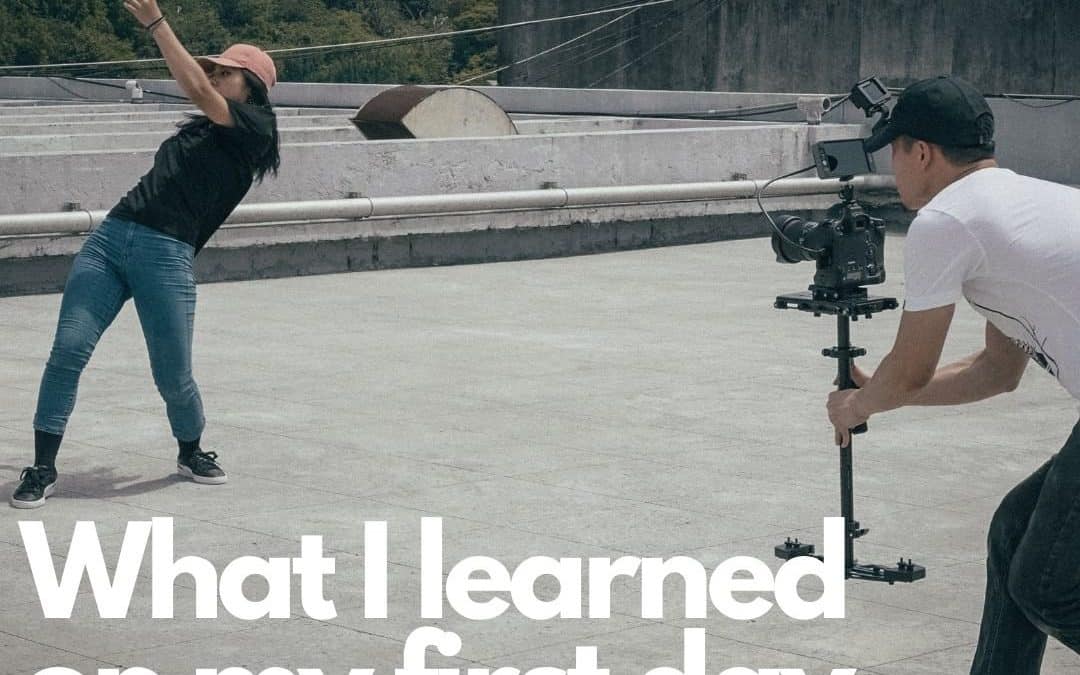The day of filming started early, the sun had yet to rise, and the 94-degree heat had not yet shown itself. I was early. My mentor had yet arrived, so I looked over the interview questions I wrote up the night before and tried to imagine how it would go. Would there be a backdrop to set up? What kind of microphones would we use? What type of equipment would we use? Would I know how to use it all?
When my mentor arrived, we had a few minutes to set up. Our first step? Moving the gear from his vehicle up three levels and into the studio. Thankfully there was a freight elevator that we could load everything into. However, when we got in the elevator, it would not move—the first lesson, problem-solving. We now had a vehicle full of gear that needed to be taken up three flights of stairs, and minutes to move it. My Mentor quickly figured out what was needed and what could be left behind. We grabbed what was needed and began caring it up the 3 flights of stairs. There was no time to think about the heat or the super heavy gear we had to leave behind because now it was time to plan out the next course of action.
Once we brought the gear up, it was time to set up. Some of the equipment looked familiar, some of it I have never set up before. I quickly learned that I would need to build stronger muscles to set up some of the gear. My mentor assured me that it would happen as I grow more familiar with the equipment. He also taught me what each piece was called and how they all are put together.
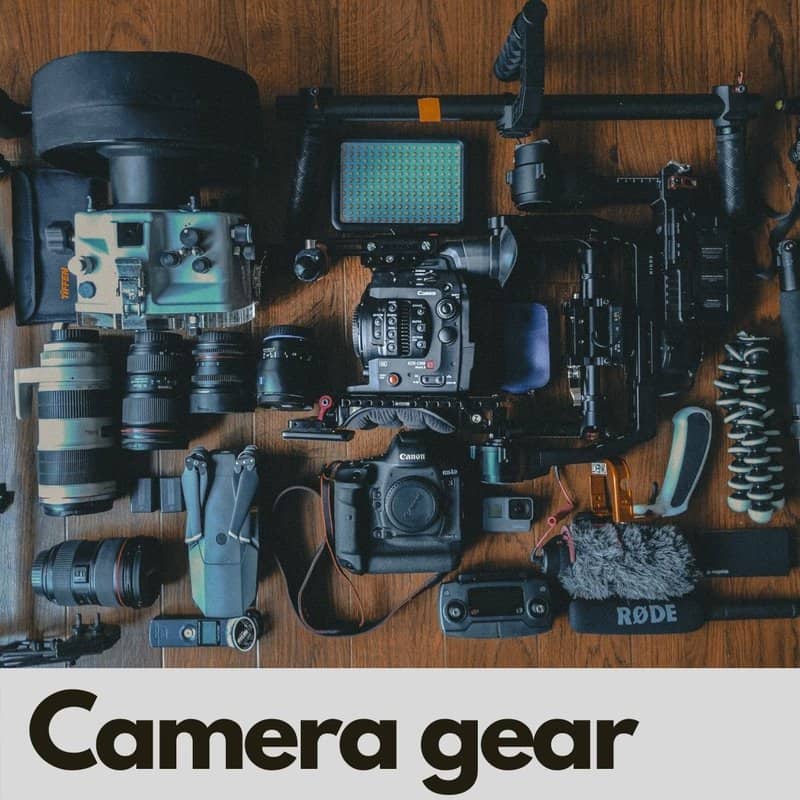
When the client showed up I didn’t know what to expect, would she be fun and easy to work with or would she be annoyed at how little I knew about the process and realize that I may be making everything slower. I knew that if I wanted her to feel relaxed, I needed to get over my usual shy personality to make her feel welcomed. I was delighted to learn that she was very friendly and patient.
We headed outside to get some profile shots. When shooting outside, there are a lot of useful elements and a lot of unpredictable factors. For starters, you are not limited by space. However, the weather makes for some unpredicatable situations.
You can move around changing what you show in the background much more than working indoors with a backdrop.
Typically there is more light. The sun is crazy bright, no surprise, so our challenge was to work with the light rather than trying to overpower it. We used a handheld 5 in 1 light reflector to bounce the light back to our talent’s face. I had a lot of fun and could see so many opportunities to be creative by coming outside.
One of the scenes that we discovered was completely unplanned and turned out to be one of my favorites. The location where we took the outside shots was filled with artwork, sculptures, carvings, and graffiti. We took her picture in front of this maroon graffiti flower, and we didn’t realize until she was standing in front of it that the flower matched her shirt. I highly recommend that if you have the time to explore your surroundings, try multiple shots just to see. You may be surprised that the unplanned shot might be your favorite.
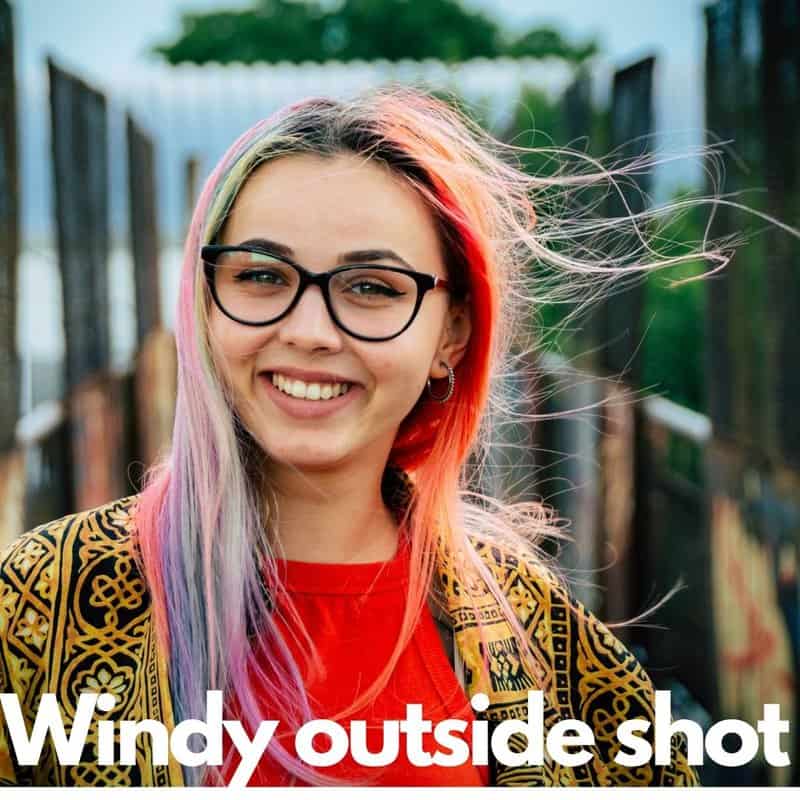
While we were outside, I was charged with making the sun work in our shots. This sometimes meant diffusing the light to soften the intensity and at other times to bounce the light back to fill in shadows. Other times it was blocking off direct sunlight. When doing this, I held a diffuser above the subject’s head. The diffuser itself is lightweight, but it is also a big rectangle. Keeping it over my head with both arms stretched out for several minutes, was a definite workout and took its toll on my arms. I watched as my arms began to shake in protest. This confirmed that I will have to build up my muscles.
Once we returned inside the air-conditioned studio, we got something cool to drink. My mentor sat down at his computer uploaded and viewed the profile shots we took. The client and I sat down on the couches, getting to know one another. I was able to ask some of the interview questions I thought up the night before. I wanted to give her a relaxed time to think about the questions and form answers in a more informal setting before the lights, and camera were on her. After hearing how she worded things, I made a mental note to remember what she said and repeat it back to her if she got stuck during recording.
Once we had the camera settings set and the lighting just right. We added a lavalier mic to her jacket and did a few sound checks. We then began to build the shot for the look we wanted – paying particular attention to little things to make sure they weren’t distracting and that the scene matched her professional tone as an attorney. This meant moving tables, books, and other random things that could be seen in the shot until they were just right.
The camera pointed at her. My Mentor was positioned behind the camera, monitoring the audio. He had headphones in so he could hear what was being recorded from the mic. I sat next to the camera, keeping eye contact with her. Her job was to answer questions and explain her answers to me.
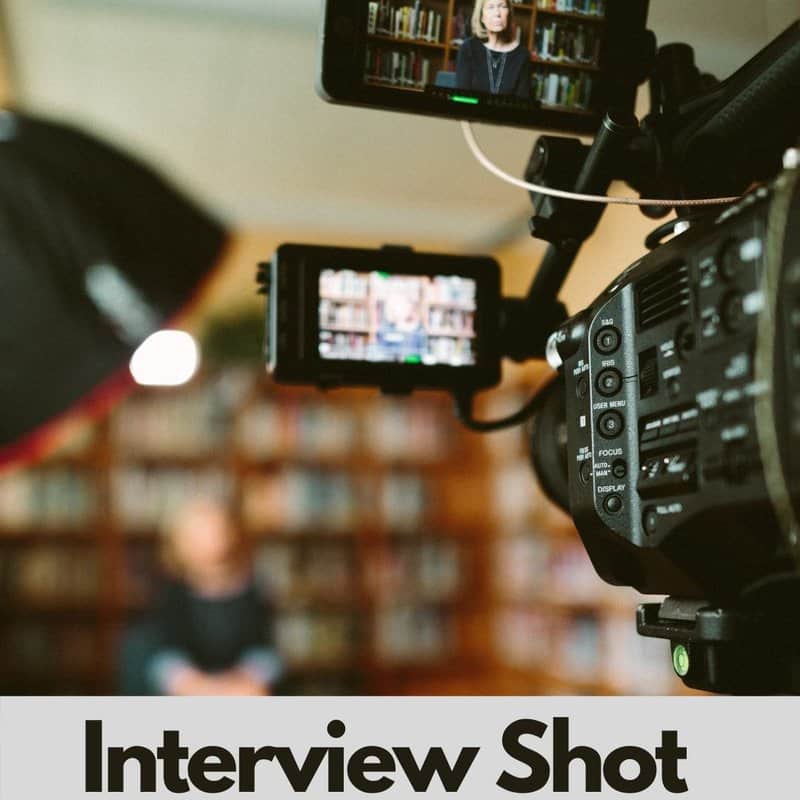
My role was to listen intently, not making any sounds that the microphone would pickup while she spoke. Which is kind of odd the first time around because you want to add a “yeah” or a “huh” to the conversation as you would typically add while listening to someone who was explaining something. I also noticed that she was taking facial cues from me. When I had a blank face, so did she, and when I smiled and raised my eyebrows showing interest on my face, so did she. This was tricky because somethings had to be reshot or reworded, and acting like it was new information each time without looking ridiculous was sometimes tricky.
I learned from my mentor that he normally will not actually ask the interviewer the questions until they are rolling and on camera so that this “first response” is them authentically answering your questions. Sometimes he will even do a “2nd take” where a 2nd person (camera operator and interviewer) will switch seats and run through the same questions to get fresh responses as if they had never answered the questions before.
Sometimes I would slip up and smile differently, which would lead to both of us laughing. I think I worked on my mental control in these moments to fix my facial expression and breathing to bring things back. Although allowing time for short breaks of laughter, kept things relaxed and fun. Emotions come across on screen. Since the client was a defense attorney, we didn’t want her emotions to come across as stressed.
While we were recording, we were brainstorming how the answers were sounding – what we wanted to add – thinking if there were any questions or answers that we might want to be rephrased.
In one of these moments, we were all brainstorming at once and trying to come up with the best phrasing. When we paused to remember what we said at the beginning of our brainstorming, my mentor took the memory card to the computer to playback what we said.
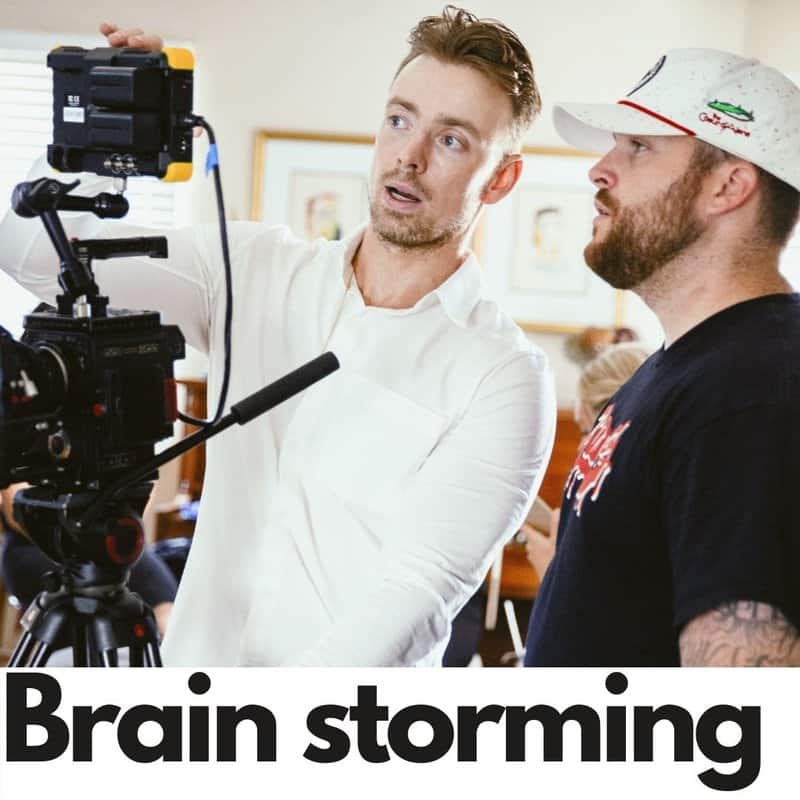
This could never have been done if he stopped recording while we were brainstorming, which reinforced the concept that you should never stop recording. If only the parts needed for the commercial were being recorded, we would never have gotten it just right.
When we were convinced, we had everything we needed. We disconnected her mic. She thanked us for our time and headed out. We began to take down the gear and started putting it away. It was then that I really noticed how complex cases are. Everything had its own compartment. Everything had to be put away in a specific order. I learned what buttons to push to disconnect the equipment into their parts.
Then which order these parts were put away. Finally, where and how these parts were put away. For some reason, we were able to take the elevator back down. Being my first time in a freight elevator, this was a little scary as it shook a little but was better than carrying everything back down the steps. We loaded it back into his vehicle and said goodbye. I cant wait to see what we will work on next.
About this blog article author:
– Ashley is a 2020 film student part of an online film school that places students in active, professional video production studios.
